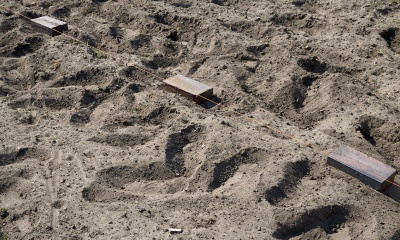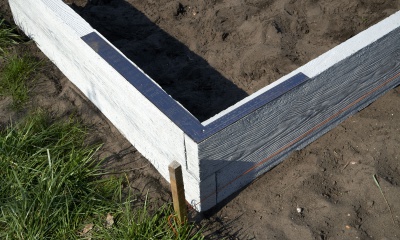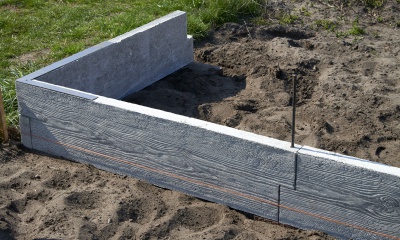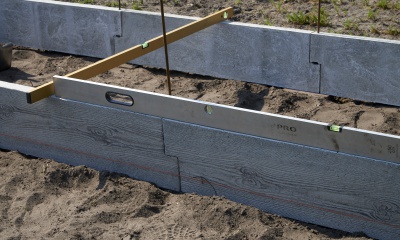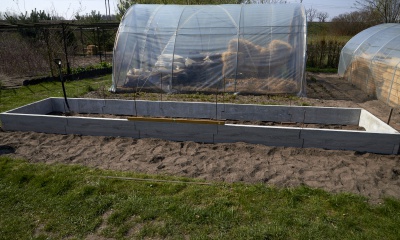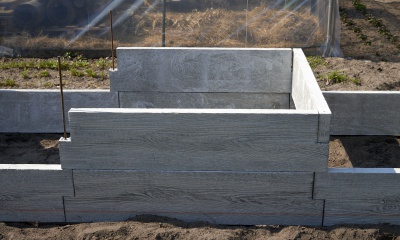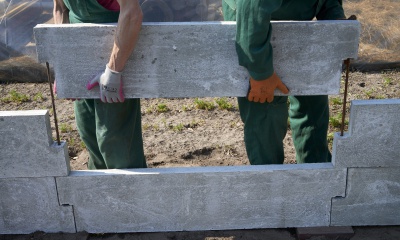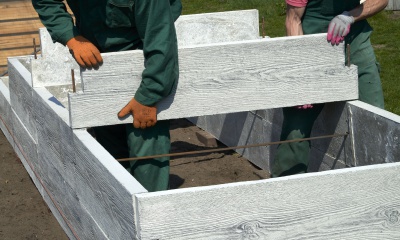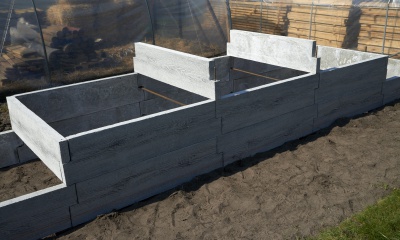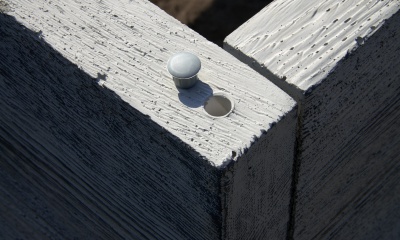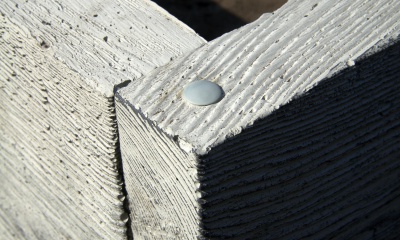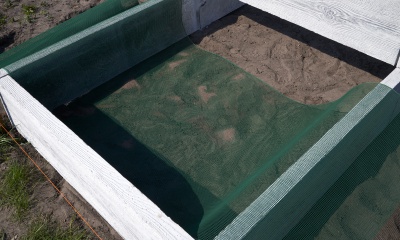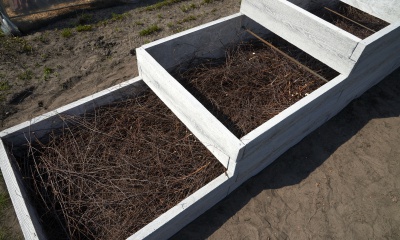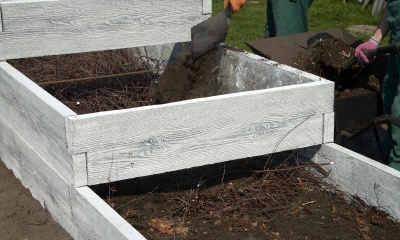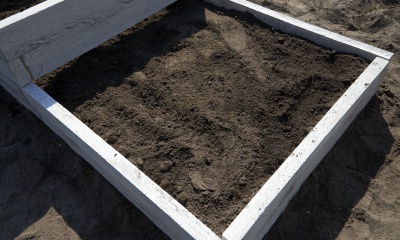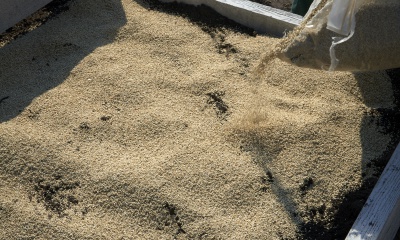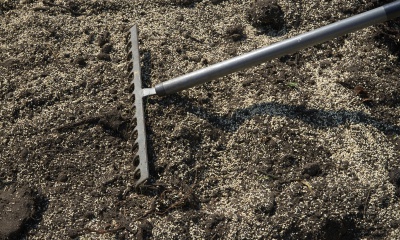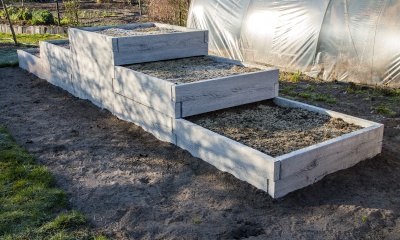Mounting of vegetable gardens
The mounting of concrete vegetable gardens is very simple and intuitive.
The first step is to choose the right job. The surface should be flat and the grass and weeds removed. To get healthy vegetables, most of them should be in the sun for at least 8 hours.
When we find a suitable place, it is important to level the area under the bottom edge of the vegetable garden, so that the substrate does not run away from the center.
The next step is to arrange the corner, marking a right angle and gradually adding more elements, which are connected with stainless steel pipes and flat bars. The tubes come in different lengths depending on the height of the vegetable garden. Thanks to the flat bars, the ground pressure on the side walls is smaller and the rebate will not tilt.
- 1. Outlining the course of the vegetable garden and arranging reinforcements for connecting elements
- 2. Laying one layer
All elements should be constantly checked with a spirit level. This is important because in the event of unevenness, water will either flow out through the gaps or press against the walls.
- 3. Checking the levels
Once we have the first level laid, we put the next elements on, creating the second and the next third floor.
With all the pieces back on, it’s time to plug the holes with the plugs. They can be attached with silicone, so they will not fall out.
- 4. Application of the next layer
- 6. Installation of transverse walls
- 7. Installation of plugs
What to fill the raised beds with?
The bottom of the vegetable garden can be covered with a fine mesh, which will prevent voles from getting inside. The side walls should be protected with impregnation and foil.
The first layer is mainly used as filling for crates. Small twigs that will decompose quickly can be used for this. The next layer is compost or manure, followed by soil. The substrate can be mixed with vermiculite, which perfectly enriches and loosens the soil, regulates water and air conditions and contributes to the improvement of plant growth.
When the raised bed is ready, you can start planting it.
What is best to plant in the raised bed?
You can plant anything in the vegetable garden. However, it is worth filling the patch with vegetables and herbs, which we often eat. If you like to eat salads, you can plant different salad mixes, cherry tomatoes, cucumbers and carrots. If, on the other hand, we are lovers of soups and meat dishes, you can plant potatoes, celery, leeks, onions and herbs. We recommend that you include at least one vegetable that is new to us – it may turn out to be a positive surprise.

